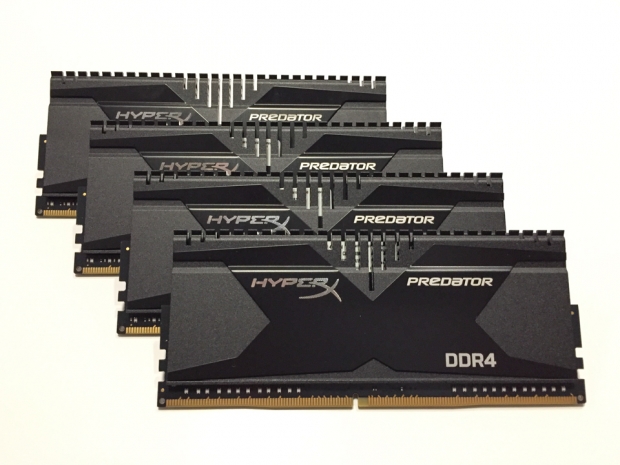Index
More overclocking headroom than some higher-rated kits
Kingston Technology’s HyperX product division is one of those memory brands that has consistently ranked high with gamers and overclocking professionals for its ability to deliver tight timings, reliable performance, and quality heatsink designs that deliver stable temperatures for a variety of high-bandwidth applications.
The company has been the largest independent producer of DRAM memory modules since its foundations in 2002, managing to ship over 700 different products within its first ten years. In 2012, the company’s HyperX Predator DRAM series replaced the previous T1 lineup as its high-end memory line, offering speeds up to DDR3 2666MHz and later increasing up to DDR4 3200MHz as of last summer.
There are now three high-end memory lines to choose from – HyperX Savage, HyperX Predator, and HyperX Fury – each featuring different variations in heatsink design, voltages, and CAS latencies. For this review, we will be focusing on the HyperX Predator line that was introduced in 2014 for Intel X99 motherboards and the high-end desktop platform.
HyperX Predator DDR4 2666MHz

The company’s HyperX Predator series was designed for Intel’s six and eight-core processors to deliver faster video editing performance, 3D rendering, AI processing and gaming responsiveness. While the product line begins at speeds of DDR4 2133MHz and now goes up to DDR4 3200MHz, we will be focusing on one of the middle options at DDR4 2666MHz with CL13 latency. Based on some early reviews we’ve read from HW-DB.com, this kit seems to offer a good balance of primary timings and minimum stable voltage for daily use and provides a decent amount of overclocking headroom versus some higher-clocked kits.
Packaging and Specifications
For this review, we received the 16GB (4 x 4GB) kit of HyperX Predator DDR4 2666MHz memory modules (HX426C13PB2K4/16) for use with an Intel X99 system. They arrived packaged in minimal plastic casing sandwiched between two pieces of acoustic foam for padding, along with a small “Kingston HyperX case” badge.
The modules were assembled in Taiwan but likely originated from Kingston’s headquarters in Fountain Valley, California. According to early reviews, some of the company’s pre-production HyperX Predator DDR4 samples operated at 1.5 volts, but they have since lowered the voltage to 1.35v over the past two years. As far as circuitry is concerned, these modules use SK Hynix ICs and feature two hand-tuned XMP profiles – one at DDR4 2400MHz and one at DDR4 2666MHz.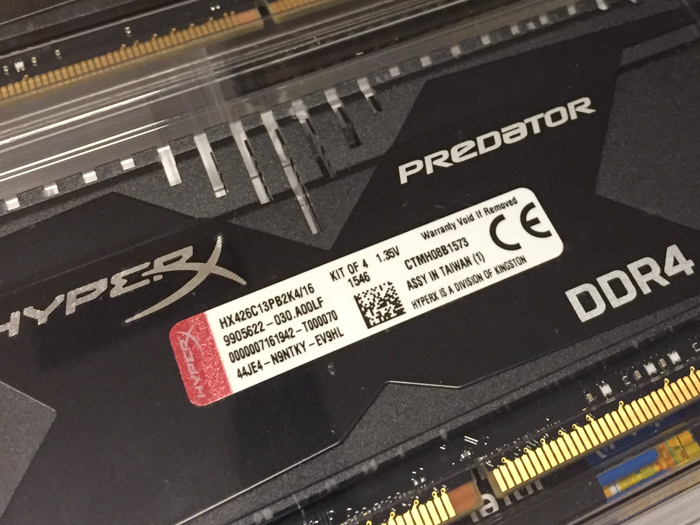
According to HW-DB.com, the modules use single-sided Hynix H5AN4G8NMFR memory chips in 4Gbit density.
We decided to go with a 4 x 4GB memory kit in order to leverage the full performance of our EVGA X99 Classified motherboard’s memory bandwidth, though we weren’t convinced that 4 x 8GB (32GB) configuration was necessary for the majority of our workload situations. This PC is usually run for office productivity applications and occasional gaming, not for enterprise database workloads, video editing, or large file transfers that require extra memory capacity.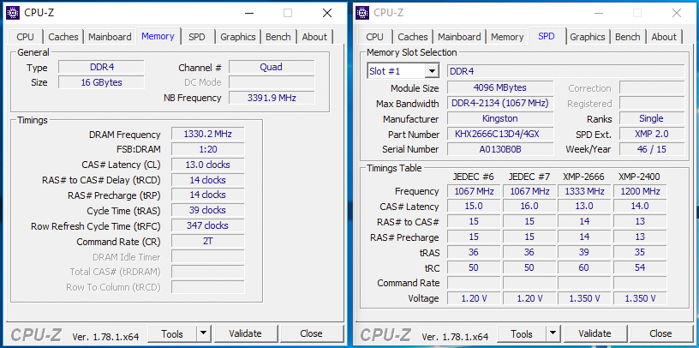
The main difference between Kingston’s HyperX Savage and HyperX Predator line are the heatsink layouts, with the former being offered in a low-profile design while the latter features taller fins and more room for heat dissipation. The DDR4 Predator kit features the same design used in the DDR3 lineup, so it appears the company is confident that this is a reliable design that improves thermal performance and complements the designs of the latest PC hardware. Whether there is actually a thermal difference between the two designs is perhaps negligible, but the price difference between the two kits is about $10 USD. Amazon.com sells the 16GB Savage kit for $142, while HardDiskDirect.com sells the 16GB Predator kit for $153.
Test System
Our full test configuration featured an Intel Core i7 5930K CPU at 3.80GHz, an EVGA X99 Classified motherboard, a Corsair H110 liquid cooling system with push-pull 180mm fans, a Mushkin Scorpion Deluxe 240GB PCI-E SSD as the primary drive, and a SilverStone Strider 1500W PSU inside a SilverStone Raven RV02 case. The system was running Windows 10 Pro x64 version 1607 and was operating in a room temperature environment with side panels off.
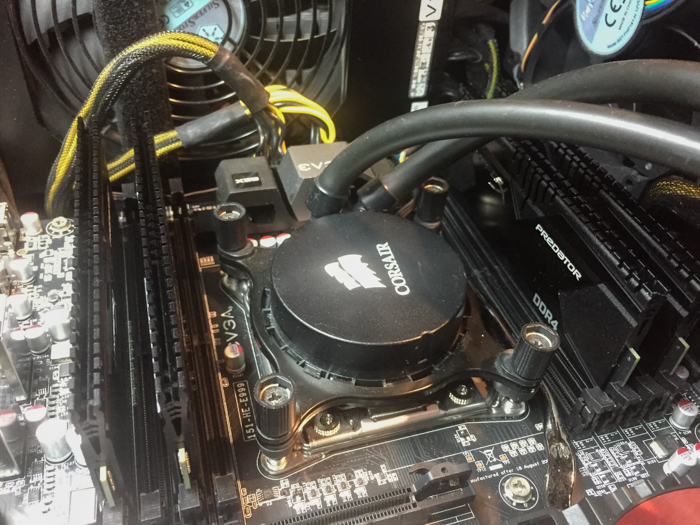
Results – Sandra Lite 2016
SiSoftware Sandra 2016 is a highly popular utility that includes benchmarking and diagnostic features for many PC hardware interfaces, including CPUs, GPUs, memory subsystems, storage subsystems and virtual machines, along with Internet and LAN metrics.
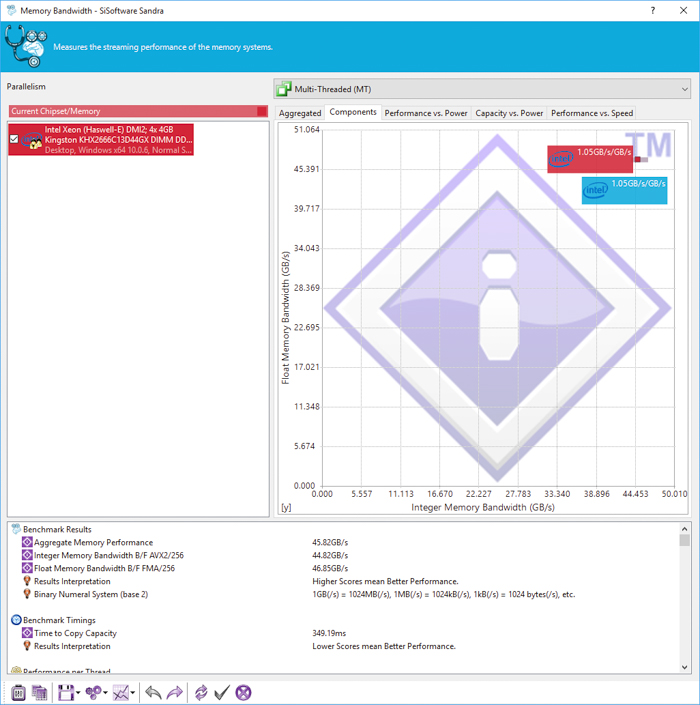
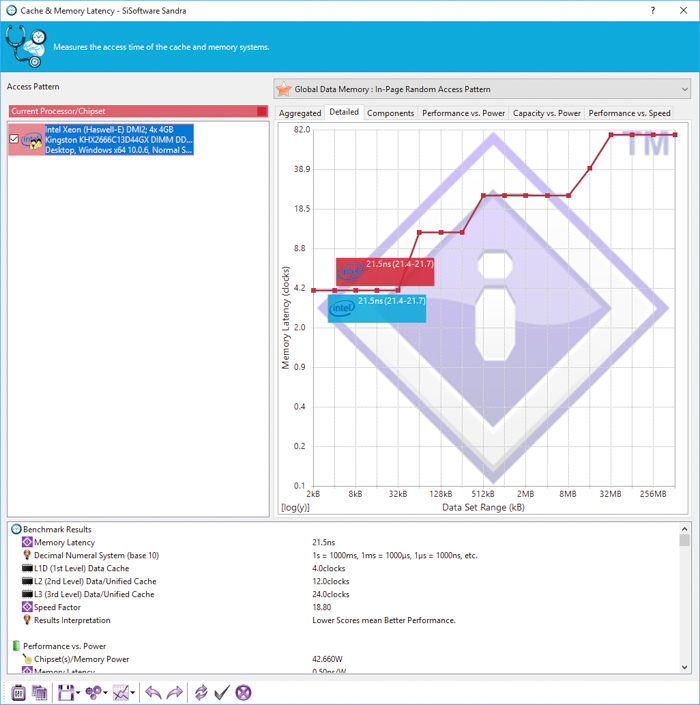
In this test, the memory scored 45.82GB/s in aggregate performance, 44.82GB/s in integer bandwidth and 46.85GB/s in float memory bandwidth. On the other hand, latency at DDR4 2666MHz is 21.5ns, which would put this kit towards the top of Passmark’s memory latency chart.
Results – PCMark 8
Futuremark's latest PCMark 8 application is an industry standard way of testing popular productivity applications from Microsoft Word to Adobe Reader. We ran the Home test, which measures baseline performance for common task-intensive workload situations including photo editing, gaming, web browsing, writing and video chat.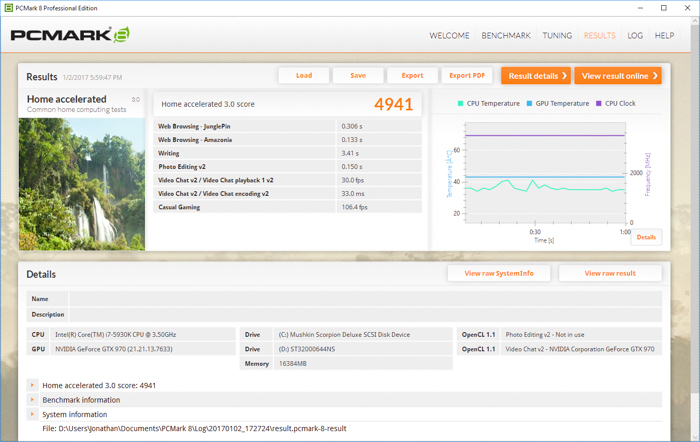
With the test run in Home Accelerated mode, our machine scored 4,941 points running at DDR4 2666MHz, making this XMP setting a good choice for typical office workloads.
Results – Passmark PerformanceTest 9
PerformanceTest 9 is an objective PC benchmark that allows users and reviewers to make independent measurements on CPU operations, 2D and 3D graphics, disk subsystems and memory performance. For our review, we ran the Memory Mark test, which measures Database Operations, Memory Read Cached and Uncached, Memory Write, Available RAM, Memory Latency and Memory Threaded performance.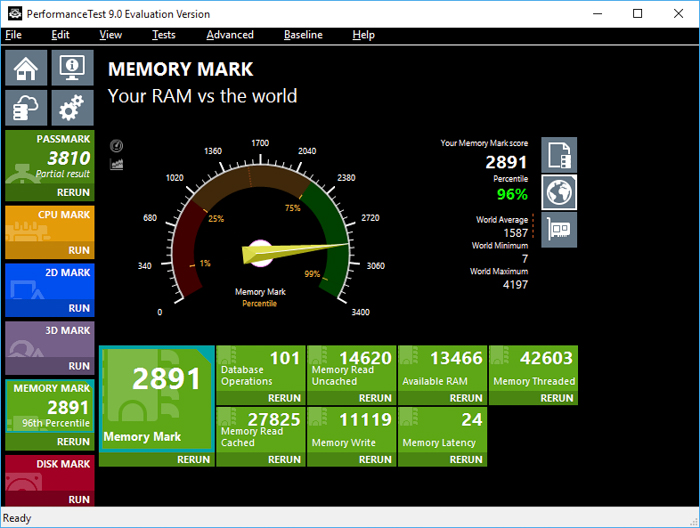
Our 16GB (4 x 4GB) configuration produced a score of 2,891, which puts this kit in the database’s 96th percentile. This is higher than the world average of 1,587, yet lower than the highest score of 4,197.
Results – MaxxMEM2
MaxxMEM Preview is a useful utility developed by Mustafa Bicak that measures memory subsystem bandwidth by using an aggressive data prefetching algorithm over several passes. The goal is to deliver theoretical bandwidth for both read and write operations.
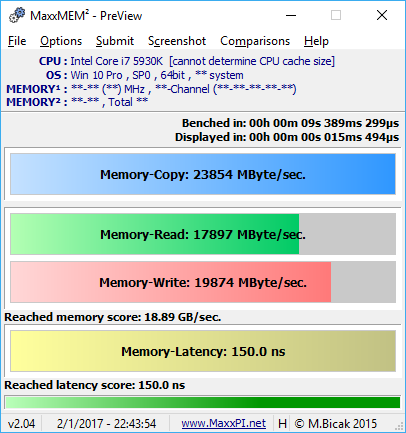
In this test, the Kingston HyperX Predator DDR4 2666MHz CL13 memory kit averages 23.85GB/s in copy performance, 17.9GB/s in read performance, and 19.87GB/s in write performance. Memory latency for this test is 150ns, while the overall memory score is 18.89GB/s.
MaxxMEM Multi is a second benchmark from the same developer that contains a multi-threaded way of measuring bandwidth by running three simultaneous threads. Each thread is split into three subcategories including a stream-based thread, MMX-based thread, and an SSE instruction-based thread.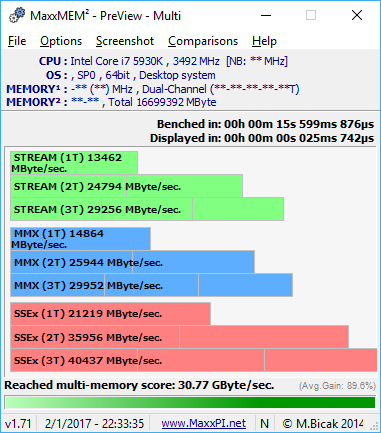
In this test, the memory kit averages 30.77GB/s, with an average gain of 89.6 percent while running three simultaneous threads over running just one.
Conclusion
Memory manufacturers continue to charge a premium for higher clock speeds, but they are not necessarily the best value for overclocking environments. In terms of overclocking, the folks at HW-db.com discovered an almost linear dependency between stable frequency and minimum stable voltage when CAS latency remains the same. It is possible to achieve DDR4 2800MHz speeds at CL13 using just 1.32 volts. When moving up to CL14, the modules can achieve DDR4 3000MHz speeds at just 1.31 volts, making this kit an ideal choice for overclocking flexibility compared to higher-clocked 2800MHz, 3000MHz and 3200MHz kits. Those options will ideally perform at CL14 and C15 within 0.5 volts of the rated 1.35v specification, though for some reason the lower CL13 modules seem to contain a bit more headroom at a lower price. However, the kit seems to generally prefer lower timings over higher voltages when overclocking.
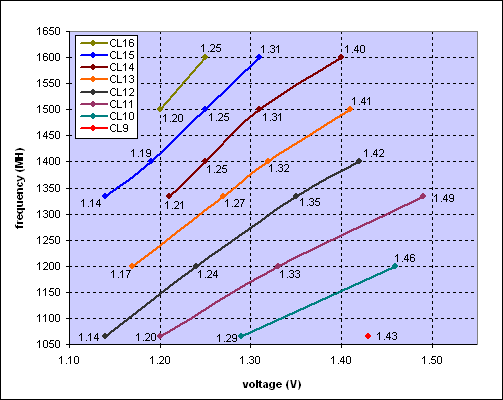
Source: HW-DB.com
Better overclocking value than 2800MHz and 3000MHz kits
HW-DB says the HyperX Predator DDR4 2666MHz C13 Predator kit featured some of the best-clocking DDR4 it has tested, claiming it is likely a model with one of the best CAS latency to frequency ratios in the HyperX lineup. The kit currently retails for $152.97 on HardDiskDirect.com, though it can often be found as low as $100 in open-box warehouse deals when they appear. Meanwhile, the 2800MHz variant of this kit is available for $130, the DDR4 3000MHz variant is available for $127, and the DDR4 3200MHz variant is available for $159.
Kingston’s 16GB (4 x 4GB) HyperX Predator kit (HX426C13PB2K4/16) is affordable and backed by a lifetime warranty, including free technical support. The kit’s ability to easily reach DDR4 2666MHz speeds using an XMP profile at less than the advertised 1.35 volts, along with hitting DDR4 2800MHz speeds at the same CL13 rating make this an attractive option over the company’s dedicated 2800MHz modules (HX428C14PB2K4/16) and for experimenting with lower voltages, even its DDR4 3000MHz modules (Kingston HX430C15PB2K4/16).

